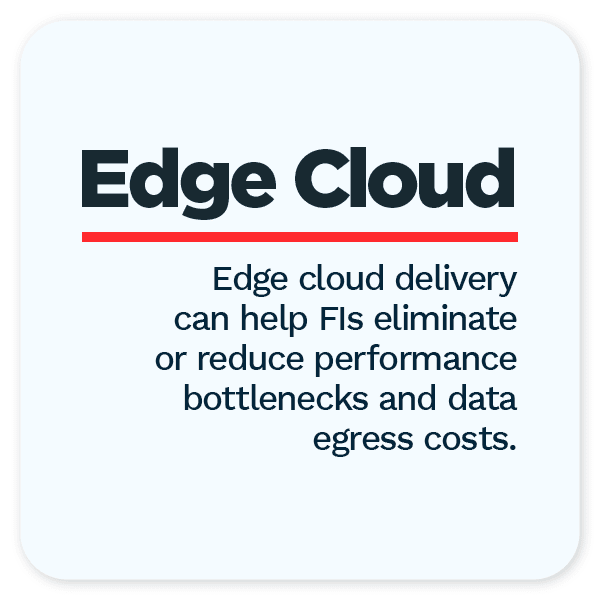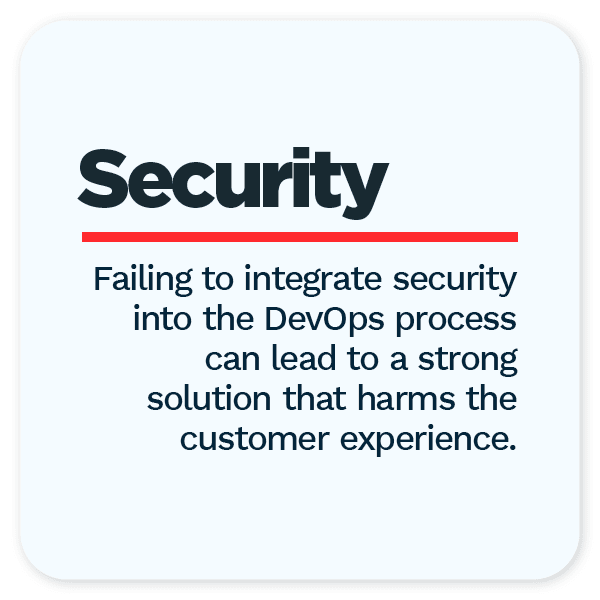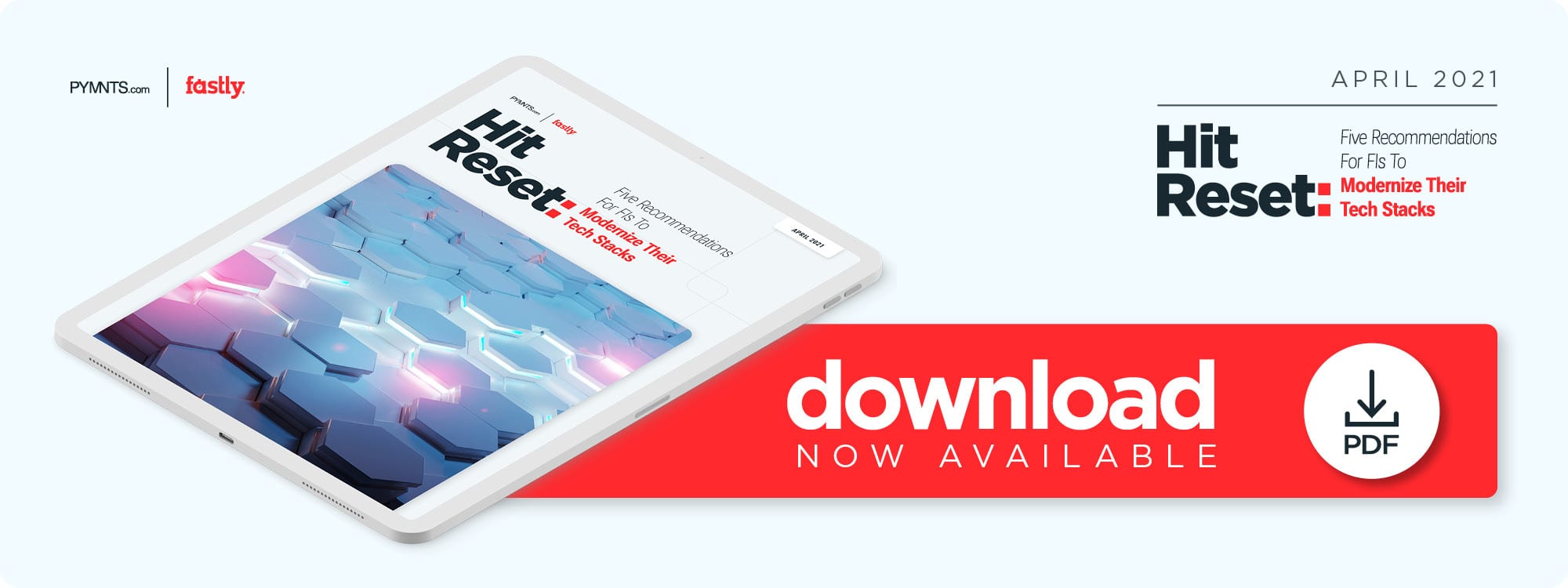New Report: Hit Reset: Five Recommendations For FIs To Modernize Their Tech Stacks

The pressure to innovate comes from outside and from within for financial institutions (FIs).
FI leaders measure their success based upon whether they have created efficiencies at scale, bolstered security and achieved savings while maintaining or boosting performance. Today’s consumers, meanwhile, expect FIs’ products to offer expanded functionality, smooth service and customization that allows them to truly make these products their own.
An unfortunate roadblock prevents many FIs from moving forward with the digital innov ation strategies they have in mind: their antiquated technological infrastructure. Overhauling existing architecture is a costly and time-consuming ordeal for most FIs. Many FIs would like to incorporate cutting-edge digital features and processes into their tech stacks but have resigned themselves to proceeding with legacy platforms, as investing in entirely new infrastructure comes with risks and uncertainties.
ation strategies they have in mind: their antiquated technological infrastructure. Overhauling existing architecture is a costly and time-consuming ordeal for most FIs. Many FIs would like to incorporate cutting-edge digital features and processes into their tech stacks but have resigned themselves to proceeding with legacy platforms, as investing in entirely new infrastructure comes with risks and uncertainties.
The technical, security and visibility concerns inherent in operating with outdated infrastructures may seem like insurmountable hurdles to FIs, but there is a solution that can help them update their technology stacks. Edge cloud solutions — those that operate at the edge of providers’ networks and thus have a dramatic impact on end users’ experiences — can allow FIs to scale their innovation efforts while using their existing digital architecture.
In Hit Reset: Five Recommendations For FIs To Modernize Their Tech Stacks, a PYMNTS and Fastly collaboration, we examine the challenges keeping FIs from pursuing their innovation agendas even as consumers begin to consider security, seamlessness and functionality to be table stakes offerings. We also assess how proactively focusing on innovations and harnessing the potential of edge cloud solutions can help them circumvent the limitations of their legacy infrastructures to offer standout customer experiences.
We found that many FIs labor under the assumption that they must “rip and replace” their architecture and start from scratch to obtain the results they seek. They could instead be nefit from partnering with firms that have the technology to help them augment their existing processes, allowing them to optimize their workflows and give their teams the tools they need to operate effectively and independently.
nefit from partnering with firms that have the technology to help them augment their existing processes, allowing them to optimize their workflows and give their teams the tools they need to operate effectively and independently.
Shifting their processes to the edge cloud could also help FIs realize tangible operational benefits without going back to the drawing board on their infrastructure. Edge cloud delivery solutions can help FIs’ apps and websites serve responses closer to end users by shifting the computational burden to the edge cloud and using an adaptive cache, mitigating performance bottlenecks and keeping egress costs lower.
These are just a few of the insights uncovered by our analysis. To learn more, download the Playbook.

